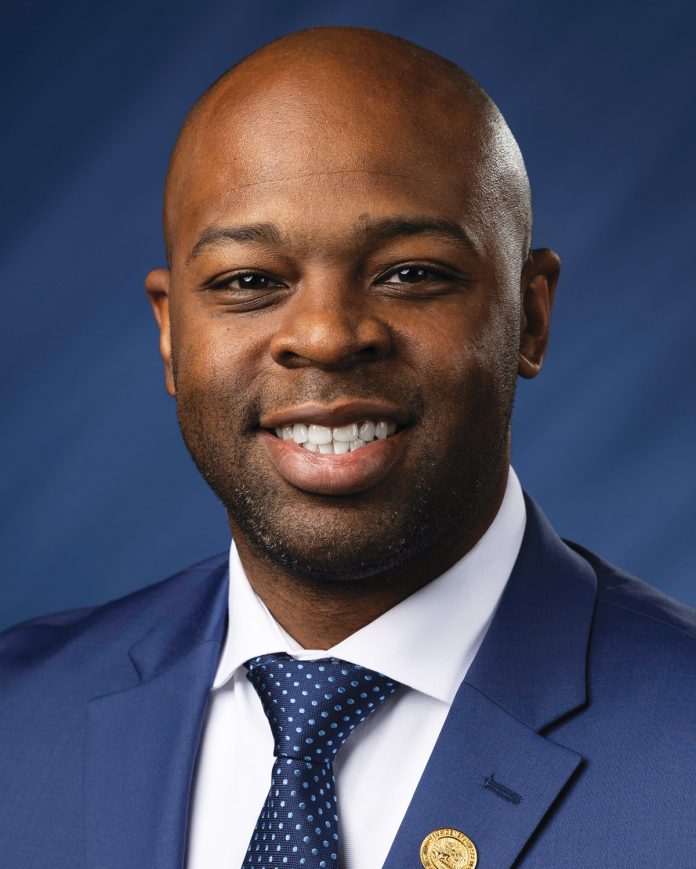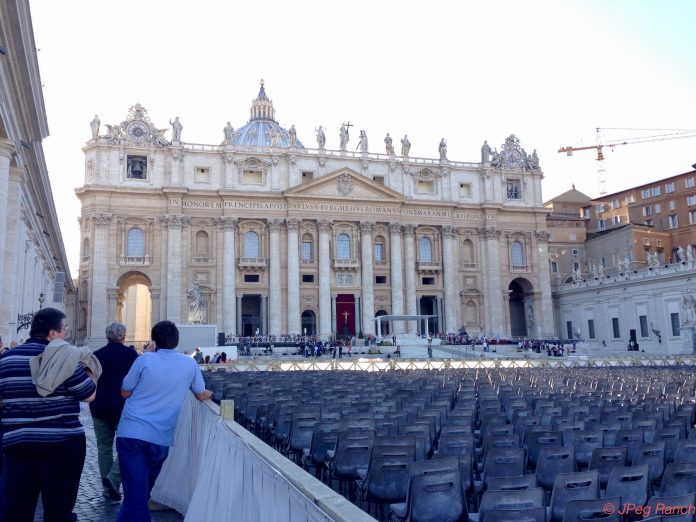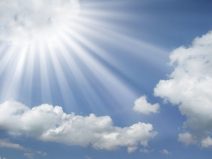MAY PROMOTIONS
GIFT GIVEAWAYS
Qualified, invited Bally Rewards Members receive a choice of Free Gift(s)* or Free Slot Play.
*While supplies last
Thursday, May 1: Choice of Target, Walmart, Texas Roadhouse, VISA Gift Card
Friday, May 2: Choice of Target, Walmart, Texas Roadhouse, VISA Gift Card
Saturday, May 3: Choice of Director Chair or 37″ Soundbar with Remote
Wednesday, May 7: Gibson Home 5-Piece Glass Drinkware Set
Thursday, May 8: Choice of Target, Walmart, Texas Roadhouse, VISA Gift Card
Saturday, May 10: Blowout Gift Giveaway
Wednesday, May 14: Tabletop Fire Pit or 50-foot Coil Water Hose
Thursday, May 15: Choice of Target, Walmart, Texas Roadhouse, VISA Gift Card
Wednesday, May 21: Conair Volume and Shine Hair Dryer
Thursday, May 22: Choice of Target, Walmart, Texas Roadhouse, VISA Gift Card
Wednesday, May 28: Eternal Living Ice Cream Serving Set
Thursday, May 29: Choice of Target, Walmart, Texas Roadhouse, VISA Gift Card
Saturday, May 31: Choice of Target, Walmart, Texas Roadhouse, VISA Gift Card
NEW MEMBER OFFER
Begins May 1, 2025!
Sign-up to become a Bally Rewards member and receive a chance to win $5 to $50 in Free Slot Play at any Bally Rewards kiosk. Free Slot Play offer is valid for 24 hours from sign-up. One offer per person.
DOWNLOAD OUR APP & SPIN TO WIN
Now – June 30
Open to all Bally Rewards members. Club members who download and sign up for the all-new Bally Rewards App may visit the Rewards Club, during Club hours, to spin the Prize Wheel for a chance to win $5 – $100 in Free Slot Play. The Bally Rewards App must be shown to a Players Club Representative on the Player’s phone before the Player will be allowed to spin the wheel. Free Slot Play is valid for 72 hours. One prize per person.
DERBY BONUS CASH
Friday, May 2 – Sunday, May 4
Qualified and invited Bally Rewards Members will bring their Bonus Free Play Offers ($25 – $100) to the Players Club for redemption.
BILOXI, ATLANTIC CITY, OR LAKE TAHOE TRIP GIVEAWAY
Friday and Saturday, May 2 & 3, from 5PM – 9PM CT
Open to qualified and invited Bally Rewards members. Players check in at any Bally Rewards kiosk to print a Trip Voucher. Present the Trip Voucher at the Bally Rewards Center to pick up a FREE Travel Certificate.
BALLY BUCKS MULTIPLIER
Each Monday in May • All day! 12 Midnight – 11:59PM CT
Open to all Bally Rewards Members. Play your favorite casino games with your Bally Rewards card inserted in the machine to earn 5X Multiplier toward your Bally Bucks.
BALLY BUCKS MULTIPLIER FOR CHAMPIONS TIER
Each Sunday in May • All day! 12 Midnight – 11:59PM CT
Open to Champions Bally Rewards Members only. Play your favorite casino games with your Bally Rewards card inserted in the machine to earn 5X Multiplier toward your Bally Bucks.
$10,000 JACKPOT PARTY
Sunday, May 4 • DRAWINGS AT 2PM, 2:30PM, 3PM & 3:30PM CT
Open to Bally Rewards Members who received a Jackpot of $1,200 or more between January 1, 2022, and 5:59AM on Saturday, May 3, 2025. Rewards Members will have one entry for each hand-paid Jackpot! To be eligible for the drawings, swipe your Rewards card at any Bally Rewards kiosk and activate your entries on May 4, between 12PM – 3PM. Drawings will be held at the Players Club. Five names will be drawn every half hour from 2PM to 3:30PM. Each winner receives $500 in Free Slot Play.
DERBY THUNDER KIOSK GAME
Tuesdays, May 6 and 20, and Sunday, May 18, from 6AM – 11:59PM CT
Qualified and invited Bally Rewards Members swipe their card at any Bally Rewards kiosk to play this game and see how much Free Slot Play they have won, from $5, $10, $25, or $500.
$20,000 JACKPOT PARTY
Wednesday, May 7
DRAWINGS AT 7PM, 7:30PM, 8PM & 8:30PM CT
Open to Bally Rewards Members who received a Jackpot of $1,200 or more between January 1, 2022, and 5:59AM on Tuesday, May 6, 2025. Rewards Members will have one entry for each hand-paid Jackpot! To be eligible for the drawings, swipe your Rewards card at any Bally Rewards kiosk and activate your entries on Wednesday, May 7, any time between 5:30PM – 8PM CT. 5 winners every half hour will win $1,000 in Free Slot Play!
$20,000 CASH MOTHER LODE FREE SLOT PLAY DRAWING
Friday & Saturday, May 9 & 10
Open to all Bally Rewards Members. Receive PRINTED ENTRIES, starting at 2PM CT each day, by checking in at any Bally Rewards kiosk. Champion Tier Members receive 5 entries, Legend Tier Members receive 3 entries, Superstar Tier Members receive 2 entries, and all other Club Members receive 1 Entry. Deposit your printed entry into the drawing bin located at the Players Club. Entries do not carry over from Friday to Saturday. The drawing bin will be closed 5 minutes prior to each drawing time and will close at 8:55PM. Each day, every 15 minutes between 4:15PM – 9PM, 2 winners will receive $250 Free Slot Play.
JACKPOT BONUS OFFER
Friday and Saturday, May 9 & 10 | 5PM – 12AM CT
and Sunday, May 11 | 5PM – 10PM CT
Open to qualified Bally Rewards Members.
Champions, Legend, Superstar and Star members who win a Jackpot of $1,200 or more will be extended a Bonus Free Slot Play reward for each Jackpot they win. $400 for Championsmembers, $300 for Legend members, $150 for Superstar members, and $100 for Star members.
$5,000 SPRING FLING FREE SLOT PLAY DRAWING
Friday, May 16
Open to all Bally Rewards Members. Receive PRINTED ENTRIES, starting at 2PM CT, by checking in at any Bally Rewards kiosk. Champion Tier Members receive 5 entries, Legend Tier Members receive 3 entries, Superstar Tier Members receive 2 entries, and all other Club Members receive 1 Entry. Deposit your printed entry into the drawing bin located at the Players Club. The drawing bin will be closed 5 minutes prior to each drawing and will close at 8:55PM. From 4:15PM – 9PM, 1 winner every 15 minutes will receive $250 Free Slot Play.
MSC CRUISE GIVEAWAY
Friday or Saturday, May 16 or 17, from 4PM – 9PM CT
For qualified and invited Bally Rewards members. Players check in at any Bally Rewards kiosk to print a Cruise Coupon. Present the Cruise Coupon at the Bally Rewards Center to pick up an MSC Cruise Voucher.
BIG, BIGGER, BIGGEST ELECTRONICS GIVEAWAY
Friday and Saturday, May 16 & 17
Open to all Bally Rewards Members.
Players may earn entries from 6AM CT on May 16 – 9:30PM on Saturday, May 17.
30 Reward Points = 1 Entry • Champions = 10X Daily • Legend = 5X Daily • Superstar = 3X Daily • Star = 2X Daily. Prize Drawings will be held on Saturday, May 17. To be eligible for the Drawings, players must check in and activate their entries any time between 5:30PM – 9:30PM on May 17. Winners will be announced starting at 7PM. 80 Winners! Twenty $250 Free Slot Play Winners! Fifteen Projector Winners! Fifteen Sound Bar Winners! Fifteen 43” TV Winners! Ten 55” TV Winners! Five 75” TV Winners!
Plus, all 60 winners of electronics will each receive $100 Free Slot Play.
$20,000 JACKPOT PARTY
Friday, May 23 • DRAWINGS AT 8:30PM, 9PM, 9:30PM & 10PM CT
Open to Bally Rewards Members who received a Jackpot of $1,200 or more between January 1, 2022, and 5:59AM on Thursday, May 22, 2025. Rewards Members will have one entry for each hand-paid Jackpot! To be eligible for the drawings, swipe your Rewards card at any Bally Rewards kiosk and activate your entries on May 23, any time between 7PM – 9:30PM CT. 5 winners every half hour will win $1,000 in Free Slot Play!
$3 MILLION MEMORIAL DAY WEEKEND DRAWING
Friday, May 23 – Sunday, May 25
Open to all Bally Rewards Members.
Players earn entries by playing casino games from 6AM on May 23 – 6:45PM on Sunday, May 25. To be eligible for the drawings, check in by swiping your Bally Rewards Card at any Bally Rewards kiosk any time between 4PM – 6:45PM CT on Sunday, May 25. Drawings for Free Slot Play prizes up to $1,000. Three guests will each play for a chance to win $10,000, $20,000 or a $1 Million cash prize. Drawings start at 5:30PM from the Players Club. Must be present to win.
$15,000 FUN-TASTIC FREE SLOT PLAY DRAWING
Saturday, May 24
Open to all Bally Rewards Members. Receive PRINTED ENTRIES, starting at 2PM CT, by checking in at any Bally Rewards kiosk. Champion Tier Members receive 5 entries, Legend Tier Members receive 3 entries, Superstar Tier Members receive 2 entries, and all other Club Members receive 1 Entry. Starting at 2PM, deposit your printed entries into the Players Club Drawing Bin. The drawing bin will be closed 5 minutes prior to each drawing time and will close for the night at 8:55PM. From 4:15PM to 9PM, 3 winners every 15 minutes will receive $250 Free Slot Play.
TABLE PLAYERS DRAWING
Friday, May 30
Open to qualified, invited Bally Rewards Members. Between 4PM – 9:55 PM CT, check in at any Bally Rewards kiosk to receive your entries based on your previous Table Gaming activity.Eligible club members may print and deposit their entries into the Players Club Drawing Bin between 4PM – 9:55PM CT. Every 15 minutes between 5:30PM – 9:45PM, 2 winners will each receive $250 Free Table Play. At 10PM CT, a $1,000 Cash Prize, plus all unclaimed Free Table Play, will be awarded to one lucky winner.
$20,000 FREE SLOT PLAY FRENZY
Friday & Saturday, May 30 & 31
Open to all Bally Rewards Members. Receive PRINTED ENTRIES, starting at 2PM CT each day, by checking in at any Bally Rewards kiosk. Champion Tier Members receive 5 entries, Legend Tier Members receive 3 entries, Superstar Tier Members receive 2 entries, and all other Club Members receive 1 Entry. Deposit your printed entry into the drawing bin located at the Players Club. Entries do not carry over from Friday to Saturday. The drawing bin will be closed 5 minutes prior to each drawing time and will close at 8:55PM. Each day, every 15 minutes between 4:15PM – 9PM, 2 winners will receive $250 Free Slot Play.
BALLY’S CASINO DIRECT MONTHLY DRAWING
Ride the Bally’s Casino Direct Motorcoach for a chance to win in a monthly $500 Free Slot Play Drawing. Each time Bally Rewards members ride with Bally’s Casino Direct, they will receive 1 entry into the drawing. Earn electronic entries from the second of the month through the last day of the month. Drawing is held on the first day of each month. One winner receives $500 Free Slot Play and will be notified by email or phone.
MONTHLY EMAIL DRAWING
Bally Rewards Members submit their email addresses to enter a monthly drawing for $1,000 Bonus Free Slot Play.
TABLE GAMES
POKER ROOM OPEN DAILY
The non-smoking Poker Room features six tables, each accommodating eight players. Texas Hold “Em is offered daily. Pot Limit Omaha is offered on demand. Players will also find a Bad Beat of 4 Of A Kind, with losing being the qualifier, both cards must play. Open 11AM – 4AM CT, Monday through Thursday. Open 24 Hours, 11AM on Friday through 4AM on Monday morning. Food is not allowed in the Poker Room.
SPLASH THE POT
Each Sunday and Thursday in the Poker Room
A random Table Game will be selected each hour and $50 will be added to the Pot.
HIGH HAND OF THE HOUR
Each Tuesday & Wednesday, from 12:45PM – 9:45PM, in the Poker Room
Each hour, the highest qualifying Poker Hand for that hour will be awarded a $75 Prize.
2-5 BOMB POT
Each Wednesday night in the Poker Room
NEW SLOT GAMES
Huff N’ Puff High Rise
Bang! Bam! Boom!
Voodoo Jackpots Jack’s Gold
Kong: Skull Island
Magic Treasures Dragon
Magic Treasures Tiger
HOTEL ROOM RATES
BALLY’S EVANSVILLE HOTEL – Overnight rates start at $79
LEGEND’S TOWER – Overnight rates start at $94
PLUS
SPRING INTO SUMMER DISCOUNT OFFER
SPECIAL 20% DISCOUNT OFFER
STAY & DINE HOTEL PACKAGE
STAY & SLOT PLAY PACKAGE
BUY ONE NIGHT, GET 25% OFF A SECOND NIGHT
GOVERNMENT & MILITARY RATE
Find details at BallysEvansvillle.com
DINING, SPECIALS, AND HAPPY HOURS
CAVANAUGH’S ON THE RIVER
Located in the Riverfront Event Center
Wednesday and Thursday: 5PM – 9PM CT
Friday & Saturday: 5PM – 10PM CT
Closed Sunday – Tuesday
CAVANAUGH’S HAPPY HOUR
Wednesdays in May | 5PM – 7PM CT
Half-price appetizers paired with weekly cocktail features.
MOTHER’S DAY BRUNCH AT CAVANAUGH’S
Sunday, May 11 | 11AM – 2PM CT
See the Mother’s Day Menu HERE
BALLY BET SPORTSBOOK & BAR
Located in the Casino, the sportsbook has multiple screens for sports viewing, four Betting Windows, six Betting Kiosks and restaurant dining. The Sportsbook Bar features thirty-six beers on tap.
Sportsbook Betting Counter Hours
Sunday – Thursday: 10AM – 8PM CT
Friday & Saturday: 10AM – 10PM CT
Sportsbook Restaurant Hours
Sunday – Thursday: 11AM – 10PM CT
Friday & Saturday: 11AM – 12AM CT
Sportsbook Bar Hours – Daily: 8AM – 3AM CT
LEGENDARY CELEBRATION
Champions and Legend Tier Club Members receive complimentary appetizers and alcohol each Friday from 5PM-9PM at Cavanaugh’s On the River.
PREMIUM WEEKEND PARTY
Champions and Legend Tier Club Members receive complimentary drinks from 7PM-12AM at the High Limit Bar on Fridays and Saturdays.
LIVE ENTERTAINMENT AND NIGHTLIFE
THE PIANO BAR AT CAVANAUGH’S ON THE RIVER
The casual, upscale atmosphere of the Piano Bar is the ideal place to enjoy live regional entertainment on Wednesdays and Thursdays from 6PM-9PM and on Fridays and Saturdays from 6PM-10PM CT.
- May 1 – EJ Simmons
- May 2 – Bob Green
- May 3 – EJ Simmons
- May 7 – Bob Ballard
- May 8 – EJ Simmons
- May 9 – Bob Green
- May 10 – Bob Green
- May 11 – Bob Green
- May 14 – Bob Ballard
- May 15 – EJ Simmons
- May 16 – Bob Green
- May 17 – EJ Simmons
- May 21 – Bob Ballard
- May 22 – EJ Simmons
- May 23 – Bob Green
- May 24 – Bob Green
- May 28 – Bob Ballard
- May 29 – EJ Simmons
- May 30 – Bob Green
- May 31 – Bob Green
421 LOUNGE
Weekly live entertainment in the casino from 8PM – 12AM CT
- May 2 & 3 – Alex Yevincy
- May 9 & 10 – The Bobby Clark Band
- May 16 & 17 – Legends
- May 23 & 24 – Dreamstreet
- May 30 & 31 – NuCorp Band
MEETINGS AND GROUPS
Whether you are planning a small business meeting or a large wedding, the Bally’s Evansville Convention Services Team is ready to collaborate with you to create a customized event. Event spaces include Hotel Meeting Rooms, Riverfront Event Center, outdoor Events Plaza, and Riverfront Overlook. The Executive Conference Center is closed until further notice.
CONVENTION SERVICES MAY SPECIAL!
Book your meeting or graduation celebration with us! Receive a half-price room rental for the Month of May only, with the purchase of a catered lunch or dinner. Contact our Sales Office at 812-433-4611 for more information. Visit www.ballysevansville.com
About Bally’s Evansville
Bally’s Evansville is a multi-million-dollar entertainment complex located on the scenic banks of the Ohio River in southwestern Indiana. The single-level casino encompasses 45,000 square feet of gaming space featuring over 900 slot games, 28 live and electronic table games, a High Limit Room, and Bally Bet Sportsbook. Accommodations include a 243-room hotel tower and a 95-room boutique hotel. The property also includes three dining options, three bars, hotel conference rooms, riverfront event center, and a 1,660-vehicle attached parking garage.










